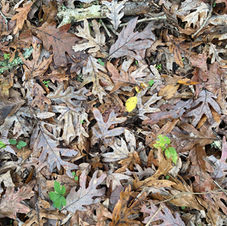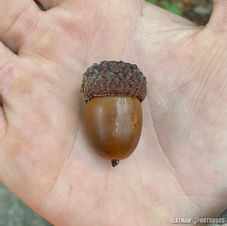White Oak
Quercus alba
Description:
The white oak is a distinct tree with its pale, shaggy bark and leaves with long, narrow, rounded lobes. Acorns are highly preferred by deer and other wildlife due to the low tannic acid content. The white oak may grow to impressive size and age, sometimes reaching several hundred years old.
Habitat:
Well-drained soils from ridges to valleys and creek bottoms. Adaptable to a variety of habitat and soil types, but not usually found around swamps or big river bottoms.
Gallery
Look-alike oaks:
Swamp White Oak - leaves and bark may appear similar at a glance; however, bark of swamp white oak is usually a darker shade of gray. Leaves of swamp white oak have irregular, shallow sinuses, while those of white oak have more uniform, deeper sinuses. Acorns of white oak are usually much larger than those of swamp white oak.
Post Oak - leaves of both species have rounded lobes, but those of post oak have fewer lobes, and the lobes are broader and more "blocky" in appearance. Bark is often similar in color, but that of post oak lacks the shaggy layers on the upper trunk.
Chinkapin Oak - bark is of similar color; however, leaf shape is entirely different. Chinkapin oak leaves have a sawtooth margin with no deep lobes. Bark of chinkapin oak has a finer, more flaky appearance, while that of white oak usually has long, shaggy plates on the upper trunk. Chinkapin oak acorns are smaller and darker brown than those of white oak.
Swamp Chestnut Oak - see chinkapin oak above - bark and leaves show the same differences, while swamp chestnut oak acorns are usually much larger than those of white oak.






















